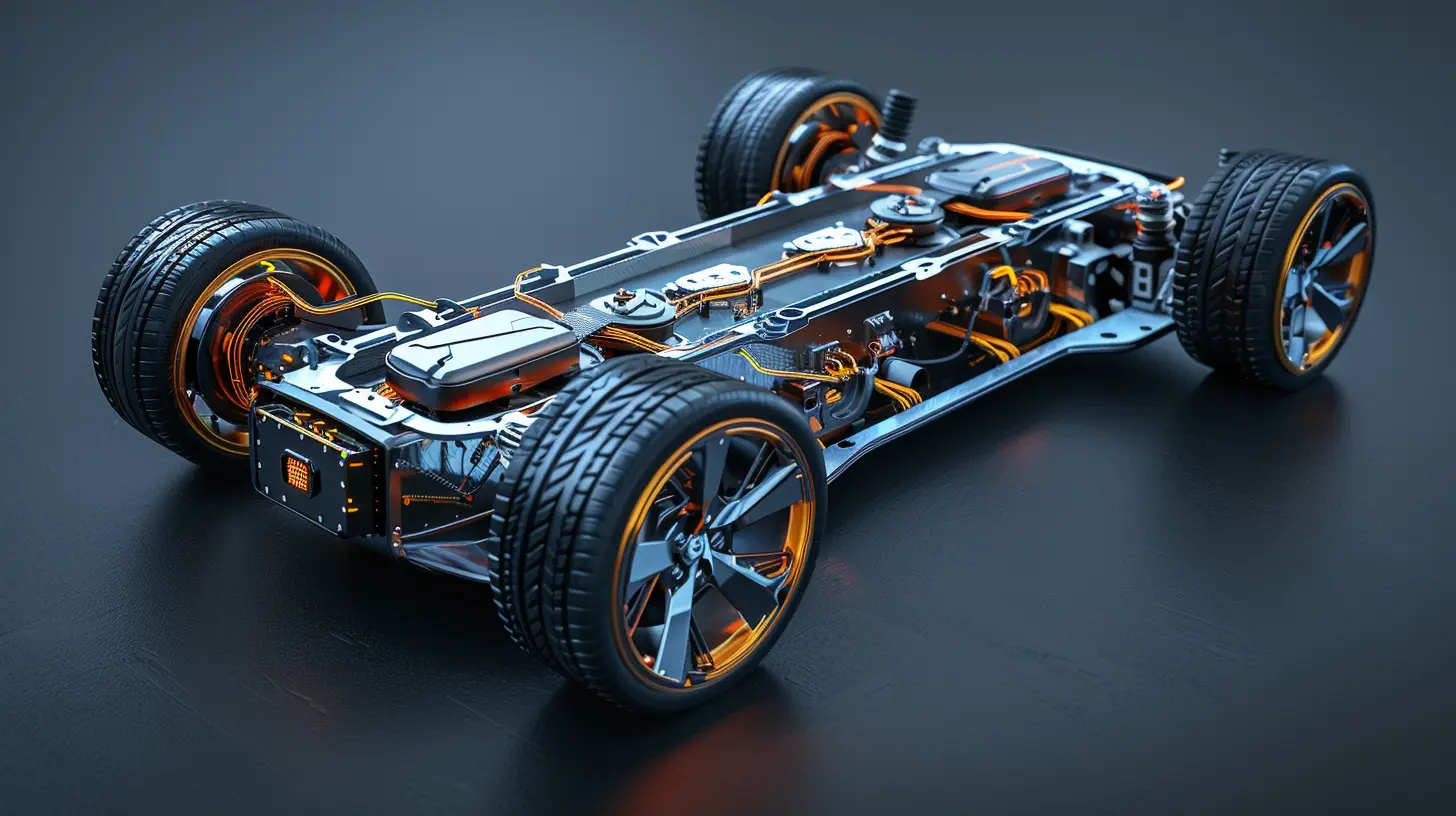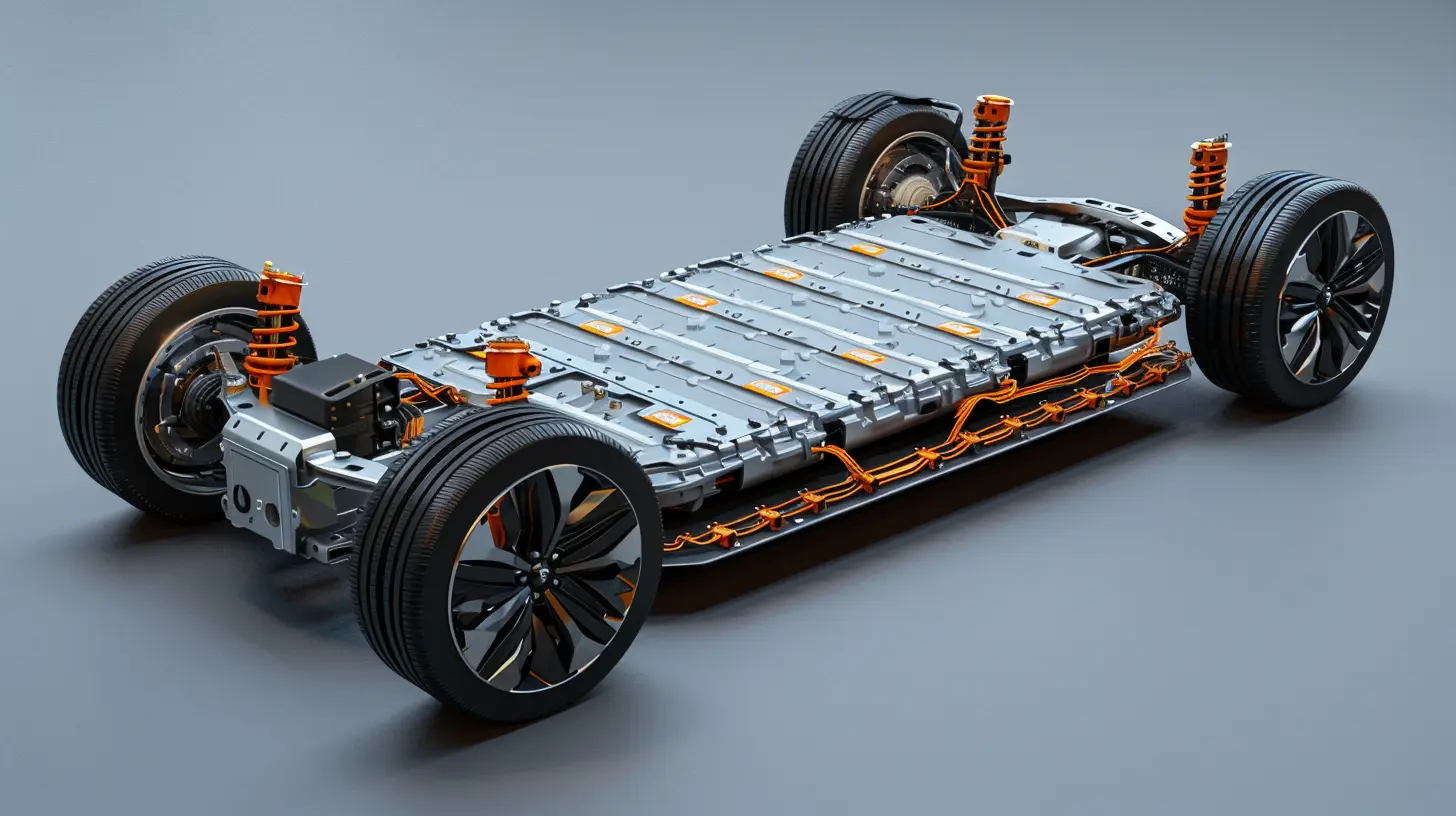The Role of Energy Density in Battery Innovation
12 July 2025
When we think about the future of technology, one key factor keeps popping up—batteries. Whether it's our smartphones, electric cars, or even renewable energy grids, the one thing they all rely on is a dependable, high-performance battery. And at the heart of battery performance lies a single concept: energy density.
Energy density might sound like a fancy scientific term, but it's crucial for determining how long our devices last between charges, how far our electric cars can travel, and even how we store energy from solar panels. So, what exactly is energy density, and why is it such a game-changer in battery innovation? Let’s break it down.

What is Energy Density?
Before diving into how it impacts battery innovation, let's first understand what energy density actually means. Put simply, energy density refers to the amount of energy a battery can store relative to its size or weight. There are two ways to measure energy density:1. Gravimetric Energy Density: Measures energy per unit of weight (Wh/kg).
2. Volumetric Energy Density: Measures energy per unit of volume (Wh/L).
Imagine you're packing for a road trip. You could either bring one heavy suitcase filled with all your clothes, or a smaller, more efficiently packed bag that weighs less but holds the same amount of stuff. Energy density works the same way for batteries. The higher the energy density, the more energy you can cram into the same space or weight.

Why Does Energy Density Matter?
Well, it’s simple: The more energy-dense a battery is, the longer it can power a device without needing a recharge. This matters across the board, from your phone to electric vehicles (EVs) to renewable energy storage systems.Think of your smartphone, for example. You don’t want it to weigh a ton just to get a longer battery life, right? And when it comes to electric cars, no one wants to stop every 50 miles to charge up. Higher energy density allows for sleeker designs, longer battery life, and more convenient usage. In short, it makes our favorite gadgets and systems more efficient and less cumbersome.

Energy Density in Consumer Electronics
Let's start small and talk about the tech we use every day—our smartphones, tablets, and laptops. Modern devices demand a lot of power. You’ve got high-resolution screens, powerful processors, and tons of background apps running all the time. Yet, you still want it to be thin, lightweight, and able to last all day without needing a charge. This is where energy density comes in.Over the years, companies have been racing to create batteries with higher energy density to meet these demands without making phones feel like bricks in your pocket. Lithium-ion batteries have been the go-to for years, thanks to their relatively high energy density. But even they have their limits, which is why researchers are constantly looking for new materials and designs that can pack even more energy into the same space.

Energy Density and Electric Vehicles
Now, let’s zoom out and look at a bigger player: electric vehicles (EVs). One of the biggest challenges for EVs is range—how far you can drive on a single charge. And guess what? That all circles back to energy density.The heavier and larger a battery is, the harder it becomes for the car to maintain a long range without frequent charging stops. The goal for manufacturers is to increase the energy density of EV batteries so that cars can travel farther while keeping the battery size and weight manageable. Right now, most electric cars use lithium-ion batteries, but companies are exploring next-gen technologies like solid-state batteries, which have the potential for significantly higher energy density.
Let’s say you’re planning a road trip in an electric car. With today’s battery tech, you might find yourself planning your route around charging stations. But with higher energy density, you could drive hundreds of miles without even thinking about it. That’s the kind of game-changer we’re talking about here.
Energy Density in Renewable Energy Storage
Energy density isn’t just about making your gadgets last longer or your electric car go farther. It also plays a massive role in renewable energy storage. Solar panels and wind turbines generate energy, but what happens when the sun isn’t shining, or the wind isn’t blowing? That’s where energy storage comes in. And, once again, energy density is key.For renewable energy grids to be sustainable, we need to store excess energy when it’s available and release it when it’s needed. High-energy density batteries are essential for making renewable energy more practical and efficient. The more energy you can store in a smaller space, the easier it is to power homes, businesses, and even cities with clean, renewable energy.
The Science Behind Increasing Energy Density
So, how do researchers actually increase energy density? There are a few different approaches, but it mostly comes down to improving the materials and design of batteries.1. New Materials
Lithium-ion batteries have been the dominant technology for years, but they’re not perfect. Researchers are experimenting with new materials like silicon anodes, solid electrolytes, and even lithium-sulfur combinations to increase energy density without sacrificing safety or durability.For example, silicon anodes can theoretically store up to 10 times more energy than the traditional graphite anodes used in lithium-ion batteries. The catch? Silicon expands and contracts significantly during charging cycles, which can lead to the battery breaking down over time. But if scientists can overcome this issue, we could see a massive leap in energy density.
2. Solid-State Batteries
Solid-state batteries are one of the most promising developments in battery technology. Unlike traditional batteries, which use a liquid electrolyte to move ions between the anode and cathode, solid-state batteries use a solid electrolyte. This not only allows for higher energy density but also improves safety by reducing the risk of overheating or catching fire.Solid-state batteries are still in the experimental stage, but companies like Toyota and QuantumScape are investing heavily in making this technology commercially viable. If successful, solid-state batteries could revolutionize industries ranging from consumer electronics to electric vehicles.
3. Optimizing Battery Design
Beyond just changing materials, engineers are also looking at ways to optimize battery design to improve energy density. This includes improving the architecture of the electrodes, enhancing the electrolyte’s performance, and finding better ways to manage the heat generated during charging and discharging. By refining these aspects, manufacturers can squeeze even more energy into the same-sized battery.Challenges in Increasing Energy Density
Of course, increasing energy density isn't as simple as just discovering a new material or design. There are significant challenges that come with the territory.1. Safety Concerns
As you increase energy density, you also increase the risk of overheating, short-circuiting, or even exploding. This is especially true with lithium-ion batteries, which have a history of catching fire when damaged or improperly charged. Safety is a huge concern, and while new materials like solid-state electrolytes promise to be safer, they still have a long way to go before they’re ready for widespread use.2. Cost
Innovation doesn’t come cheap. Developing new battery technologies can be incredibly expensive, and those costs are often passed down to consumers. While the price of lithium-ion batteries has dropped significantly over the years, newer technologies like solid-state or lithium-sulfur batteries will likely carry a premium price tag when they first hit the market.3. Longevity
Another challenge is ensuring that batteries with higher energy density can last through hundreds or even thousands of charge cycles. Some of the most promising materials—like silicon—have issues with longevity, as they degrade faster than traditional materials. This is a major hurdle that researchers are working to overcome.
The Future of Energy Density in Battery Innovation
So, what does the future hold for energy density and battery innovation? Well, it’s an exciting time to be in the field. With advancements in materials, solid-state technology, and design optimization, we’re on the cusp of a new era in battery technology.In the next 5-10 years, we could see batteries with significantly higher energy densities hitting the market, making electric vehicles more practical, renewable energy storage more efficient, and our everyday devices even more portable and powerful.
Imagine a world where your electric vehicle can travel 500 miles on a single charge, or your smartphone lasts for days without needing a recharge. Higher energy density is the key to unlocking these possibilities, and researchers are closer than ever to making it a reality.
Conclusion
In the world of technology, energy density is more than just a buzzword; it’s a critical factor driving innovation in batteries. From your smartphone to electric vehicles to renewable energy storage, improving energy density opens up a world of possibilities. While there are still challenges to overcome—like safety, cost, and longevity—advances in materials and design are pushing the boundaries of what’s possible.As energy density continues to improve, we can look forward to a future where our devices are more efficient, our cars go farther, and our energy grids are cleaner and more sustainable. It’s an exciting time, and the role of energy density in battery innovation is only going to grow more important.
all images in this post were generated using AI tools
Category:
Battery TechnologyAuthor:

John Peterson
Discussion
rate this article
2 comments
Kenna Klein
Understanding energy density is crucial for progress.
November 17, 2025 at 4:12 AM

John Peterson
Absolutely! Energy density is key to enhancing battery performance, longevity, and efficiency, driving innovation forward.
Thalwen Cooper
Great insights! Energy density is key for our sustainable future and advancing battery technology.
July 14, 2025 at 4:48 AM

John Peterson
Thank you! I’m glad you found the insights valuable. Energy density is indeed crucial for unlocking the full potential of sustainable energy solutions.


